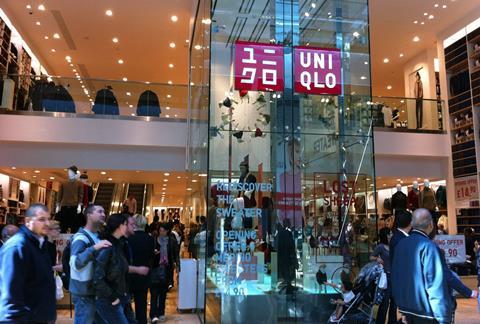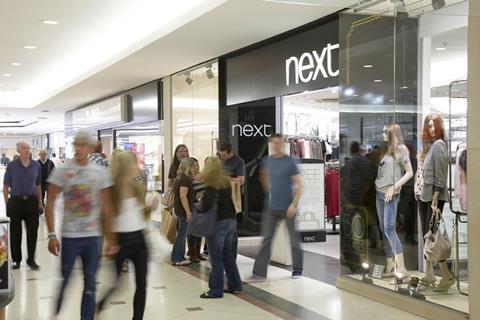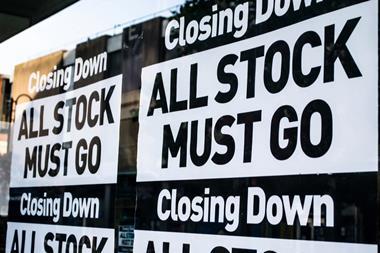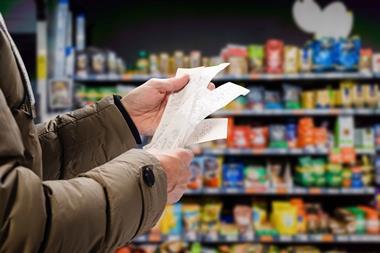Technology will remain key to retail’s transition in a complex marketplace, believes Erin Brookes, managing director and leader of the European retail and consumer practice at Alvarez & Marsal.

From same-day delivery to mobile purchasing and AI-powered forecasting, the pandemic opened the door for a drastic overhaul of retailers’ digital strategies in the past two years.
Companies of all sizes were forced to quickly reassess legacy systems and embrace technology solutions as consumers found new ways to shop and increased their reliance on digital platforms since the events in March 2020.
The seismic shifts accelerated by Covid-19 will continue to redefine the industry in the months and years to come, even if the dust from the pandemic begins to settle.
A report by Retail Economics predicted that online sales will overtake store-based sales in the UK within eight to 10 years, powered by generation shifts, connectivity improvements and changes in the property market among other trends.
New models such as quick-commerce – which flourished in the last 24 months and is projected to represent 13.9% of online sales in Britain this year – should also advance further.
Meanwhile, in-store technology will increase its role in delivering outstanding customer experience that encourages people back into physical shops as the world opens up after the worst of the pandemic.
Combining the best of online and offline

Building an efficient multichannel operating model should be at the heart of any retailer’s transition to the ‘new normal’ marketplace.
Because consumers engage with digital touchpoints throughout their shopping journey, whether it’s online or in store, retailers must consider their physical and digital presence as one single entity.
This means combining the best of the two worlds to deliver a superior customer experience that will maximise revenues and increase brand loyalty.
This rethinking may result in retailers transitioning away from some physical stores and reimagining the purpose of others – always with the help of technology.
Certain stores could become more geared towards click and collect, akin to a walk-in fulfilment hub for collection and returns.

Next is one of the retailers implementing this strategy effectively – around 80% of its online returns go back into its own shops, making handling returns significantly less costly.
Conversely, other stores will retain their critical role to provide the physical engagement that customers need to purchase big-ticket items or ‘indulgent’ products such as jewellery and cosmetics.
Leading retailers are already experimenting with next-generation technologies to enable meaningful, yet increasingly contactless, in-store experiences.
For example, Japanese clothing retailer Uniqlo introduced virtual fitting rooms in its shops in the US, while beauty retailer Sephora trialled augmented reality make-up mirrors in Milan.
Retail spaces are also finding new value as social places, especially with many shoppers longing to return to the shops after the lifting of Covid-19 restrictions.
Companies should explore how to involve customers in brand experiences, as fashion retailer Mango did in April 2021. Its pop-up store in Barcelona featured a TikTok stage where shoppers could create choreographies and take selfies to share on social media.
Beyond boosting client connection and loyalty, these in-store experiences have the potential to drive footfall, improve sales conversion and accelerate growth in today’s competitive market.
Reverse logistics is one problem point in multichannel retailing. That is because consumers are increasingly demanding cheap, fast and frictionless returns when shopping, at a time when the merging of physical and digital has increased the complexity and cost of companies’ supply chains.
Technology and automation can help retailers and their third-party suppliers handle returns at scale to ease costs and deliver great customer service. Strategic partnerships should be considered to develop sophisticated cross-channel logistics as they are often less capital-intensive and faster to implement.
“Consumers are increasingly demanding cheap, fast and frictionless returns when shopping”
New digital solutions must also be leveraged to help firms deal with upcoming macroeconomic headwinds. For example, retailers in the UK are seeing inflation rise across the board, whether it is the cost of goods sold, logistics or higher wage rates in stores.
Many have been able to hold the line against the rises so far, but this is may not be sustainable for the remainder of the year.
Scaling automation across the entire value chain – for example, by introducing cashierless checkouts and automated micro-fulfilment centres – can help address core costs and offset operating cost inflation, but will need to be seamlessly integrated into the overall customer experience where higher-touch interactions are valued.
This will be even more crucial as retailers find ways to sustain profitability amid the cost-of-living crisis currently unfolding in the UK and other geopolitical risks that may constrain growth.
Intelligent data also helps reduce the effects of other macroeconomic issues such as global supply-chain disruptions and labour shortages.
Logistics management tools that are powered by artificial intelligence and advanced analytics are effectively streamlining processes and reducing costs, with impacts on both customer satisfaction and the bottom line.
As the pandemic experience showed, technology will continue to facilitate retailers’ transition into this ever-changing, complex marketplace.
Now its the time to accelerate this transformation in a much more strategic, purposeful way.
- Don’t miss the best of the week – sign up to receive the Editor’s Choice every Friday































No comments yet